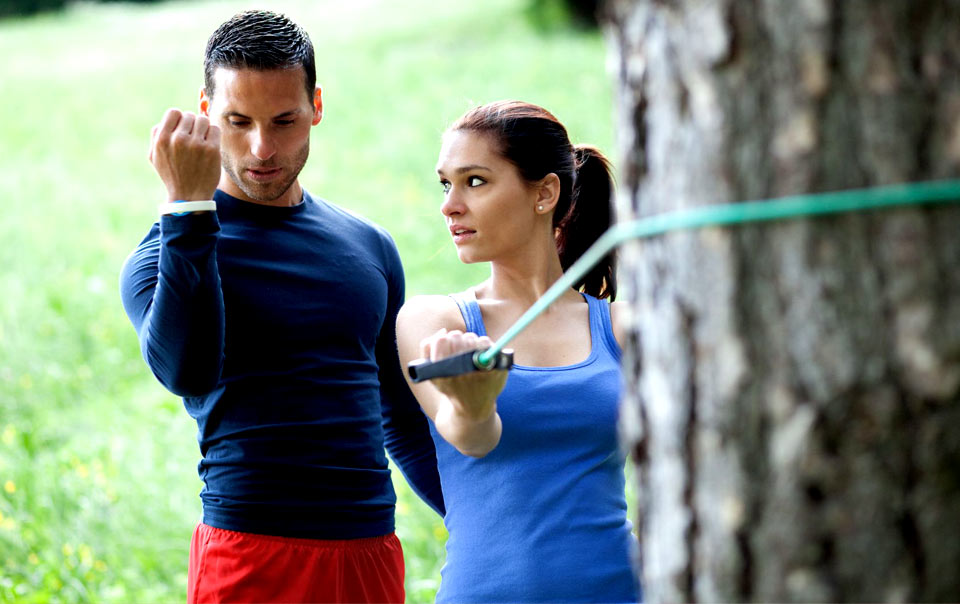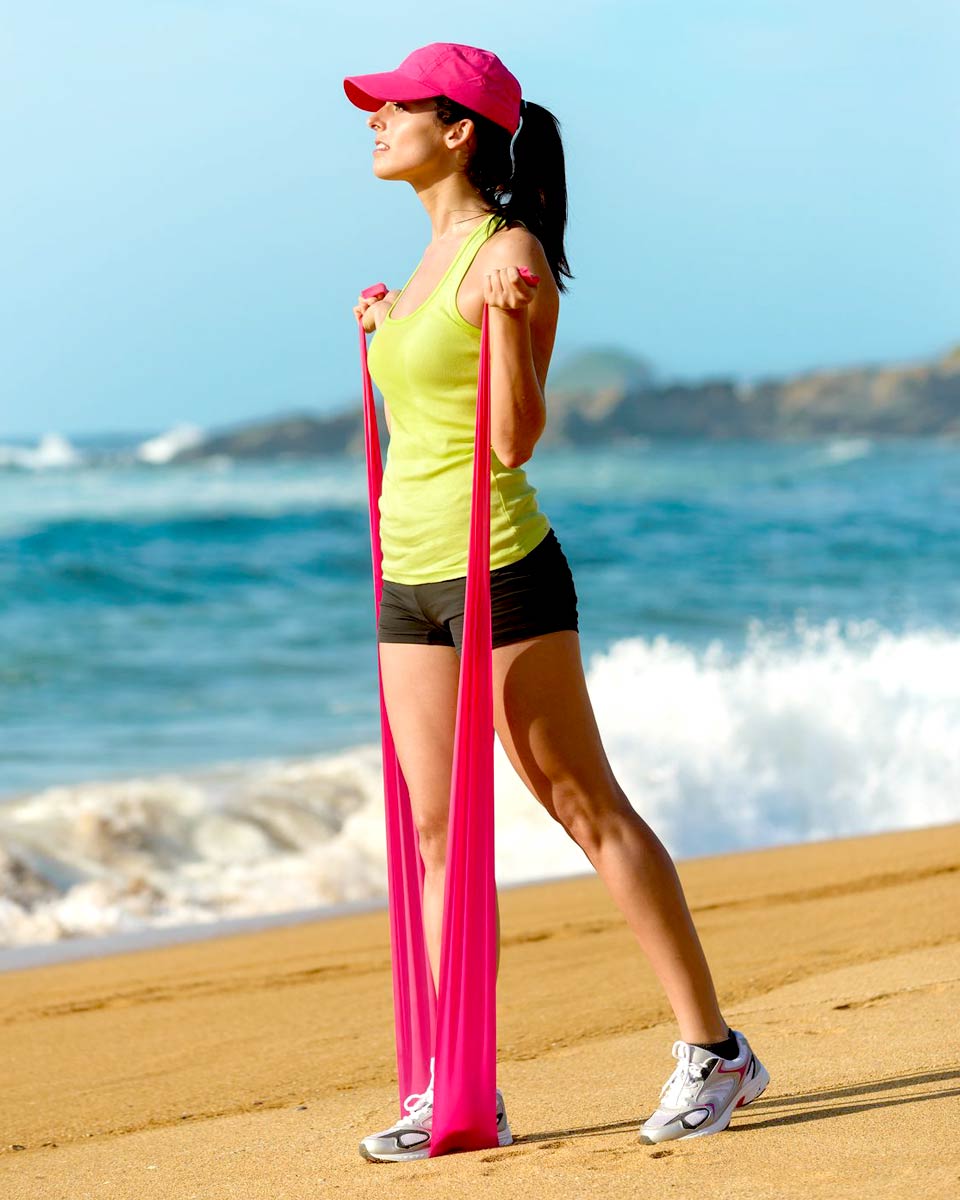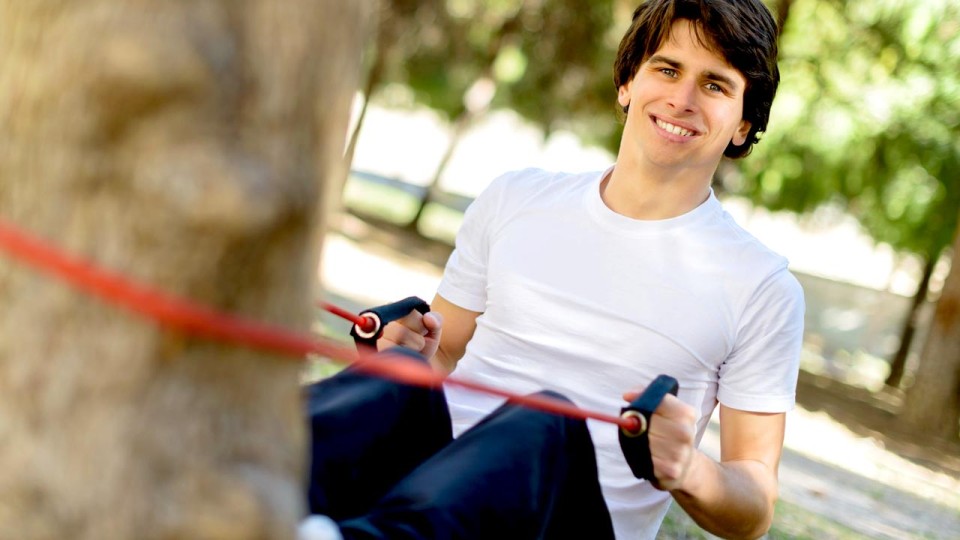Long and stressful days in the office, queues at the supermarket, battling the MRT crowd home – a few of the daily challenges facing Singaporeans, one of the hardest working countries in the world. Not surprisingly, slotting in training can be rather difficult.
Balancing running, strength training and stretching… there’s not enough hours in the day! So how about taking a different approach – time to ditch the dumbbells and look no further, it’s time to try out the humble resistance band and bring your gym on a run.
Powerbands, Resistance Bands Or Gymsticks: What To Choose?
Powerbands, resistance bands or even gymsticks could be the convenient training partner that runners are looking for. Easy to carry, light and versatile, can be used indoor or outdoors, their use is only limited by your imagination.
Powerbands are heavy duty bands that can used either on their own or with other exercise equipment and offer natural ascending resistance. Resistance or exercise bands tend to be lighter and are often seen as part of yoga or pilates based exercises. Gymsticks combine resistance bands with a strong but light ‘stick’ adding an extra element to bands along.
Versatile Form Of Training
All can be used for traditional strength work, explosive power movement or used to assist stretching. The mechanical advantage is that resistance is maintained through all parts of the motion, allowing a full range of movement.
And whilst you might not be able to ‘lift as heavy’ as dumbbells and barbells, bands offer a whole spectrum of exercise options. Bands come with difference resistance (indicated by their colour) but simply altering their length will also change how they feel.
Ensure you pick a band with a resistance appropriate to your strength and the exercise you are doing and when performing the exercise, ensure the band is secured in such a way that there is still resistance even at the bottom of the exercise.
Here are some simple exercises to get you started:
Bent over Row

- Tie a couple of bands around a pole or a tree, ideally at around chest height
- Holding one band in each hand, step back until the bands have tension.
- Slight bend in knees, pinch shoulder blades together, imagine you are trying to hold a pen between your blades. Draw your elbows back and pull the bands back.
- Release and then repeat again
- Make it harder by using stronger bands, shorting the length of the bands or doing one arm at a time.
- Make it easier by remaining seated, using lighter bands or lengthening the bands.
- Vary by adding a squat or reverse lunge whilst doing the row.
- 10-12 reps, 2-3 sets
- This exercise targets the upper back, arms and core. It helps maintain good posture, important whilst running and aids in arm drive.
Shoulder Press

- Step on a band at one end with one foot. Then only hold with your palm facing up.
- Press your palm up for one repetition.
- Make it harder by using two bands, one on each foot. Use stronger bands or shorten the length of the band.
- Make it easier by squatting down just before pressing up (this will help give some power to your press).
- Vary by exploding up on the press, include a lateral step and press.
- 10-12 reps, 2-3 sets
- This exercise targets shoulders, arms, core including obliques and when combined with lower body squats, particularly with a lateral focus is a great all over body exercise. This exercise challenges stability, and will help keep you more mobile and agile whilst running.
Woodchop
- Tie band to the bottom of a pole/tree.
- Grab the band and step to the side to create tension in the band.
- Hold the band at your knee/hip height. Have weight in the leg closest to the band
- Transfer weight to your other leg and rotate your body away from the pole/tree, at the same time driving the band up towards the sky. Imagine you are holding an axe and are chopping a tree.
- Make it harder by using a stronger band, shortening the length of the band.
- Make it easier by using a lighter band, lengthening the band.
- Varying the height of where tie the band. The angle of pull can be low or high or anywhere in between. Make it dynamic by switching sides.
- 10-12 reps, 2-3 sets
- This exercise targets predominantly core, shoulder and arms. Great for runners this exercise works through all 3 planes of motion, preparing you well for when you tackle more challenging trail courses.
Lateral step
- Loop the bands around your ankle, ensuring there is resistance
- Step laterally and squat down at the same time.
- Make it harder by using a stronger band, shortening the length of the band or by stepping further
- Make it easier by using a lighter band, lengthening the band or by shortening the step
- 10-12 reps, 2-3 sets
- This exercise is excellent at challenging stability and strengthening the glutes, building control in the ankles and feet.
The World’s Your Mobile Gym
Grab a friend, pick a park and add these exercises into light or easy paced runs. Avoid days with exhausting intervals or hill repetitions when stretching is preferred.
Slot these into a circuit combined with body weight exercises (such as pushups and crunches) and increase the intensity of the bands as you progress.
What are some other ways you do to spice up your runs? Share your workout tips with us in the RunSociety Forums!





